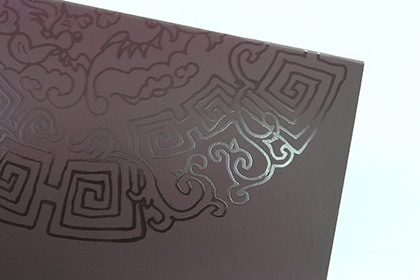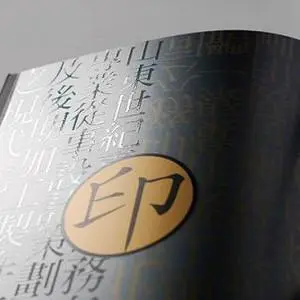According to the need of product varnishing, local varnish coating is applied to the parts of trademark and packaging printings that need to be highlighted, and the varnish pattern looks bright, shiny and three-dimensional compared with the surrounding patterns, which can produce unique artistic effects. Therefore, it is very popular among Chinese and foreign customers.
Overview
As an important surface finishing process, UV varnishing process has become an important means to realize the value-added of paper boxes. The so-called UV varnishing refers to the coating of a layer of UV varnish on the paper surface through specific varnishing equipment, and the surface of the print can reach a certain gloss after curing.
Most of the traditional varnishing equipment for the full version of the varnishing equipment, that is, only the entire surface of the print varnishing, with a certain degree of protection of the printing surface, beautify the carton, improve the role of product grade.
The local UV varnishing process is to varnish certain parts of the print or specific patterns, so that these parts or patterns and the surrounding graphics produce an obvious contrast effect, thus highlighting the focus or theme of the packaging, reflecting the characteristics of the product, to attract customer attention and purchase purposes. Full-version UV varnishing is more environmentally friendly due to no solvent volatilization, and is an alternative to the lamination process; local UV varnishing process is more prominent on the product characteristics of the appeal effect.
Now, many cosmetics, electrical appliances, food, health products and other packaging cartons are applied to the local UV varnishing process, to achieve a good publicity and promotional effect.

uv effect
At present, the common local UV effects are: local gloss, local matte, local frosting, local seven-color local refractive, local wrinkle and local ice flower.
Local UV can be implemented both after the lamination, but also directly on the print, but in order to highlight the effect of local varnish. Generally after the lamination of the print, and with the majority of matte film, accounting for about 80% of local UV varnishing products. The biggest difference between local varnishing and full-plate varnishing is that one is the need to produce a printing plate and the second is the varnishing equipment has certain registration requirements. Local UV varnishing has three main elements, namely, varnishing plate, equipment registration and curing equipment. In order to ensure that the local UV varnishing parts and has been the same size printed graphics, the production of varnishing plate should be used when the photographic imaging method.
Classification
1、Screen printing local varnishing
Screen printing has high ink transfer, thick ink layer, strong three-dimensional characteristics.
Varnishing with the screen is generally appropriate to use 200 to 300 mesh screen (for local frosting local seven-color varnishing effect, the number of low mesh), taut mesh tension in 20 to 25N / cm. due to the small investment in equipment. Many books and magazines and packaging factories in the increase of local varnishing business, are preferred to screen printing. Some professional printing varnishing company to improve the precision of varnishing, improve production efficiency. Already in use fully automatic cylinder screen printing machine. Production speed can reach 3000 sheets / hour. However, screen printing local varnishing basically uses offline production mode. The inline rotary screen printing unit is less used.
2、 Flexo local varnishing
Flexo printing is characterized by a simpler process to form a thicker coating.
Therefore, it is quite popular in UV varnishing. Flexo printing local varnishing is divided into ordinary flexo printing varnishing and special flexo printing varnishing, but also some simple graphics are still using engraved rubber letterpress. Flexo printing partial varnishing is suitable for offline varnishing can also be achieved inline varnishing. The use of flexo printing varnishing, with anilox rollers and cavity scraper, can accurately control the amount of light oil, varnishing quality and stability.
3、Gravure printing partial varnishing
Gravure printing due to the printing ink layer is thicker and gravure cylinder high printing resistance in the local uV varnishing also has advantages, especially the emergence of sheet-fed gravure printing machine for gravure printing local varnishing development has played a role in boosting. However, due to its high cost of plate making is mainly used in the long version of the varnishing business.
4、Other local varnishing methods
In the absence of UV varnish before no one will use offset printing for varnishing because its printing ink layer is too thin. And UV varnish because of the thicker film layer, high gloss plus the advantages of high overprinting accuracy in the local UV varnishing also has some applications but mainly for inline varnishing.
From the production method, local UV varnish machine can also be divided into offline varnish and inline varnish. Off-line varnishing means that printing and varnishing are carried out on special equipment requiring the use of special varnishing machines or calendering machines. When offline varnishing, because the print can be fully dry, so you can get a higher gloss than inline varnishing. In addition, off-line varnishing offers great production flexibility. The investment in equipment is small. In-line varnishing means that printing and varnishing are done on a production line, i.e., varnishing and UV curing devices are added to the press. It makes the print varnished directly after the printing is completed.
Partial UV new school technology
1、Mixed ink technology
As UV printing or UV varnishing is not suitable for application in the more absorbent substrate material surface, and printing ink surface adhesion is poor, so most of the need for inline UV varnishing, if all with UV ink printing, is bound to increase the cost: if the use of ordinary ink printing, varnishing before laminating or full varnishing, which undoubtedly hinders the application of offset printing inline varnishing.
The hybrid ink technology is an effective solution to this bottleneck problem. It combines the advantages of UV ink and traditional ink in terms of performance, that is, the advantages of light curing and oxidation polymerization drying, improve the synergistic effect of the ink surface and UV varnish, paving the way for the inline varnishing of offset printing.
2、Reverse varnishing
Reverse varnishing (Pro-Cure) is relative to the traditional local varnishing. Take the traditional varnishing method (flexo printing screen printing or gravure) for local varnishing, and finally must be printed with a local varnishing version to achieve the high contrast effect of local graphics, so the varnishing and printing overprint accuracy becomes the key to the varnishing process. The reverse varnishing process breaks through the above laws, so that the registration problem is solved.
3、 Inline UV varnishing
In-line varnishing for flexographic printing and gravure printing, is no longer a new technology, but for the wider application, printing accuracy and speed of higher offset printing, is in the call for differentiation and value-added services launched with the innovative concept of varnishing technology. Has been applied to the inline UV varnishing four main forms: ordinary ink + double varnish (water-based varnish + UV varnish); mixed ink + UV varnish; UV ink + UV varnish; UV ink + OP oil + UV varnish (reverse varnish).
